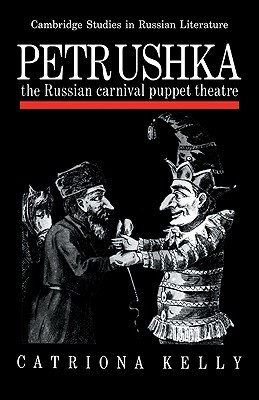
- We will send in 10–14 business days.
- Author: Catriona Kelly
- Publisher: Cambridge University Press
- ISBN-10: 0521108993
- ISBN-13: 9780521108997
- Format: 14 x 21.6 x 1.8 cm, minkšti viršeliai
- Language: English
- SAVE -10% with code: EXTRA
Reviews
Description
Petrushka, the Russian equivalent of Punch and Judy, was one of the most popular spectacles at fairgrounds and in city courtyards for over a century. Catriona Kelly's study, the first to appear in English, traces the history of Petrushka, illustrating how it reflected the tensions of Russian urban life both before and after the Revolution. Written from a standpoint informed by literary theory, her book at the same time breaks open the categories traditionally applied, both in the Soviet Union and in the West, to the study of Russian literature and popular culture. Contemporary interpretations of Petrushka on the street, high-cultural appropriations of it for a bourgeois and intellectual readership (notably the famous ballet by Benois and Stravinsky), and adaptations made for agit-prop purposes are all analysed. Based on a wide range of unusual materials, this lively and very readable account will appeal not only to literary specialists, but also to those interested in cultural politics, folklore, women's studies and popular theatre.
EXTRA 10 % discount with code: EXTRA
The promotion ends in 23d.19:59:39
The discount code is valid when purchasing from 10 €. Discounts do not stack.
- Author: Catriona Kelly
- Publisher: Cambridge University Press
- ISBN-10: 0521108993
- ISBN-13: 9780521108997
- Format: 14 x 21.6 x 1.8 cm, minkšti viršeliai
- Language: English English
Petrushka, the Russian equivalent of Punch and Judy, was one of the most popular spectacles at fairgrounds and in city courtyards for over a century. Catriona Kelly's study, the first to appear in English, traces the history of Petrushka, illustrating how it reflected the tensions of Russian urban life both before and after the Revolution. Written from a standpoint informed by literary theory, her book at the same time breaks open the categories traditionally applied, both in the Soviet Union and in the West, to the study of Russian literature and popular culture. Contemporary interpretations of Petrushka on the street, high-cultural appropriations of it for a bourgeois and intellectual readership (notably the famous ballet by Benois and Stravinsky), and adaptations made for agit-prop purposes are all analysed. Based on a wide range of unusual materials, this lively and very readable account will appeal not only to literary specialists, but also to those interested in cultural politics, folklore, women's studies and popular theatre.


Reviews